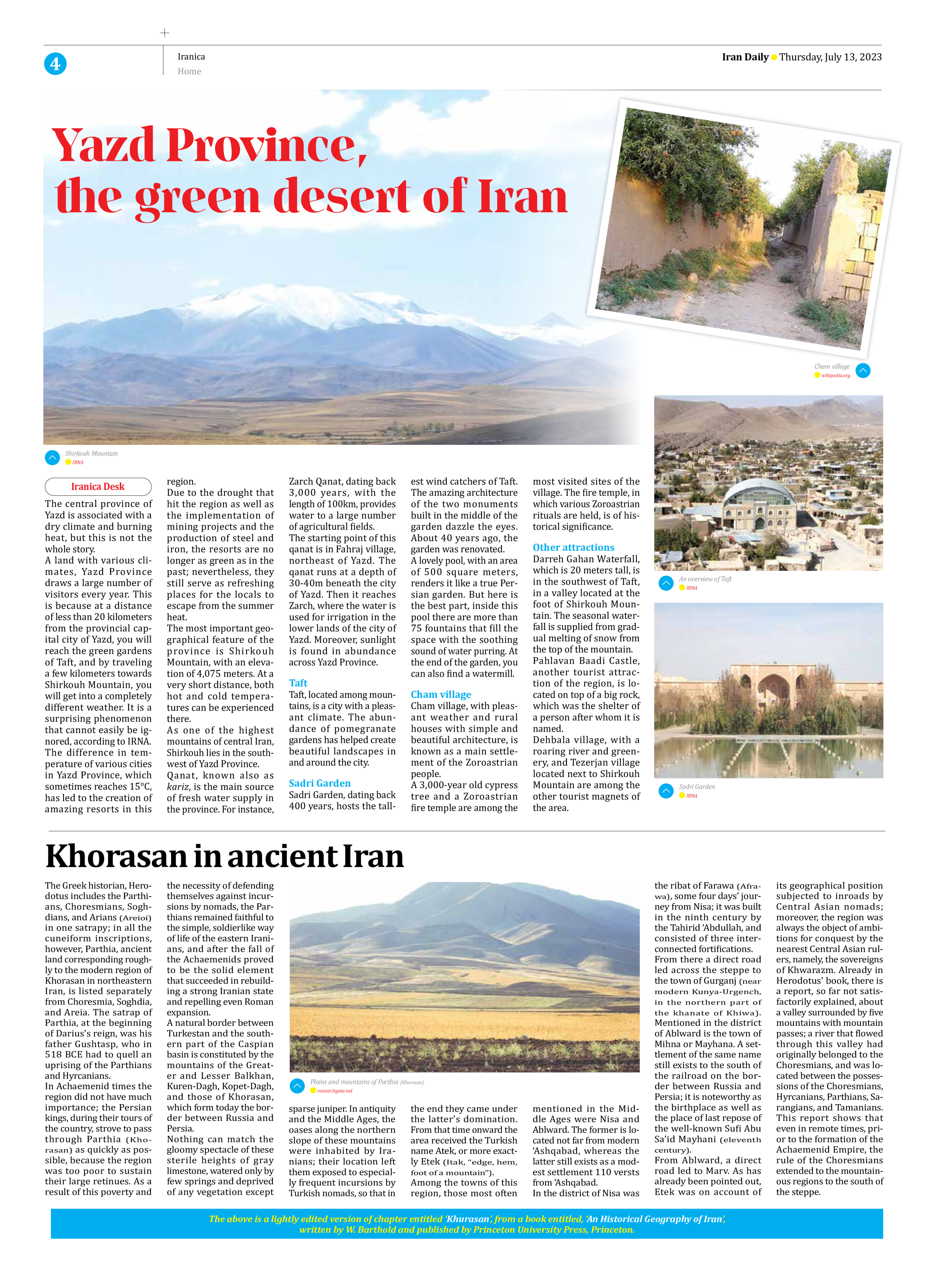
Khorasan in ancient Iran
The Greek historian, Herodotus includes the Parthians, Choresmians, Soghdians, and Arians (Areioi) in one satrapy; in all the cuneiform inscriptions, however, Parthia, ancient land corresponding roughly to the modern region of Khorasan in northeastern Iran, is listed separately from Choresmia, Soghdia, and Areia. The satrap of Parthia, at the beginning of Darius’s reign, was his father Gushtasp, who in 518 BCE had to quell an uprising of the Parthians and Hyrcanians.
In Achaemenid times the region did not have much importance; the Persian kings, during their tours of the country, strove to pass through Parthia (Khorasan) as quickly as possible, because the region was too poor to sustain their large retinues. As a result of this poverty and the necessity of defending themselves against incursions by nomads, the Parthians remained faithful to the simple, soldierlike way of life of the eastern Iranians, and after the fall of the Achaemenids proved to be the solid element that succeeded in rebuilding a strong Iranian state and repelling even Roman expansion.
A natural border between Turkestan and the southern part of the Caspian basin is constituted by the mountains of the Greater and Lesser Balkhan, Kuren-Dagh, Kopet-Dagh, and those of Khorasan, which form today the border between Russia and Persia.
Nothing can match the gloomy spectacle of these sterile heights of gray limestone, watered only by few springs and deprived of any vegetation except sparse juniper. In antiquity and the Middle Ages, the oases along the northern slope of these mountains were inhabited by Iranians; their location left them exposed to especially frequent incursions by Turkish nomads, so that in the end they came under the latter’s domination. From that time onward the area received the Turkish name Atek, or more exactly Etek (Itak, “edge, hem, foot of a mountain”).
Among the towns of this region, those most often mentioned in the Middle Ages were Nisa and Ablward. The former is located not far from modern ‘Ashqabad, whereas the latter still exists as a modest settlement 110 versts from ‘Ashqabad.
In the district of Nisa was the ribat of Farawa (Afrawa), some four days’ journey from Nisa; it was built in the ninth century by the Tahirid ‘Abdullah, and consisted of three interconnected fortifications.
From there a direct road led across the steppe to the town of Gurganj (near modern Kunya-Urgench, in the northern part of the khanate of Khiwa). Mentioned in the district of Ablward is the town of Mihna or Mayhana. A settlement of the same name still exists to the south of the railroad on the border between Russia and Persia; it is noteworthy as the birthplace as well as the place of last repose of the well-known Sufi Abu Sa’id Mayhani (eleventh century).
From Ablward, a direct road led to Marv. As has already been pointed out, Etek was on account of its geographical position subjected to inroads by Central Asian nomads; moreover, the region was always the object of ambitions for conquest by the nearest Central Asian rulers, namely, the sovereigns of Khwarazm. Already in Herodotus' book, there is a report, so far not satisfactorily explained, about a valley surrounded by five mountains with mountain passes; a river that flowed through this valley had originally belonged to the Choresmians, and was located between the possessions of the Choresmians, Hyrcanians, Parthians, Sarangians, and Tamanians. This report shows that even in remote times, prior to the formation of the Achaemenid Empire, the rule of the Choresmians extended to the mountainous regions to the south of the steppe.
The above is a lightly edited version of chapter entitled ‘Khurasan’, from a book entitled, ‘An Historical Geography of Iran’,
written by W. Barthold and published by Princeton University Press, Princeton.







